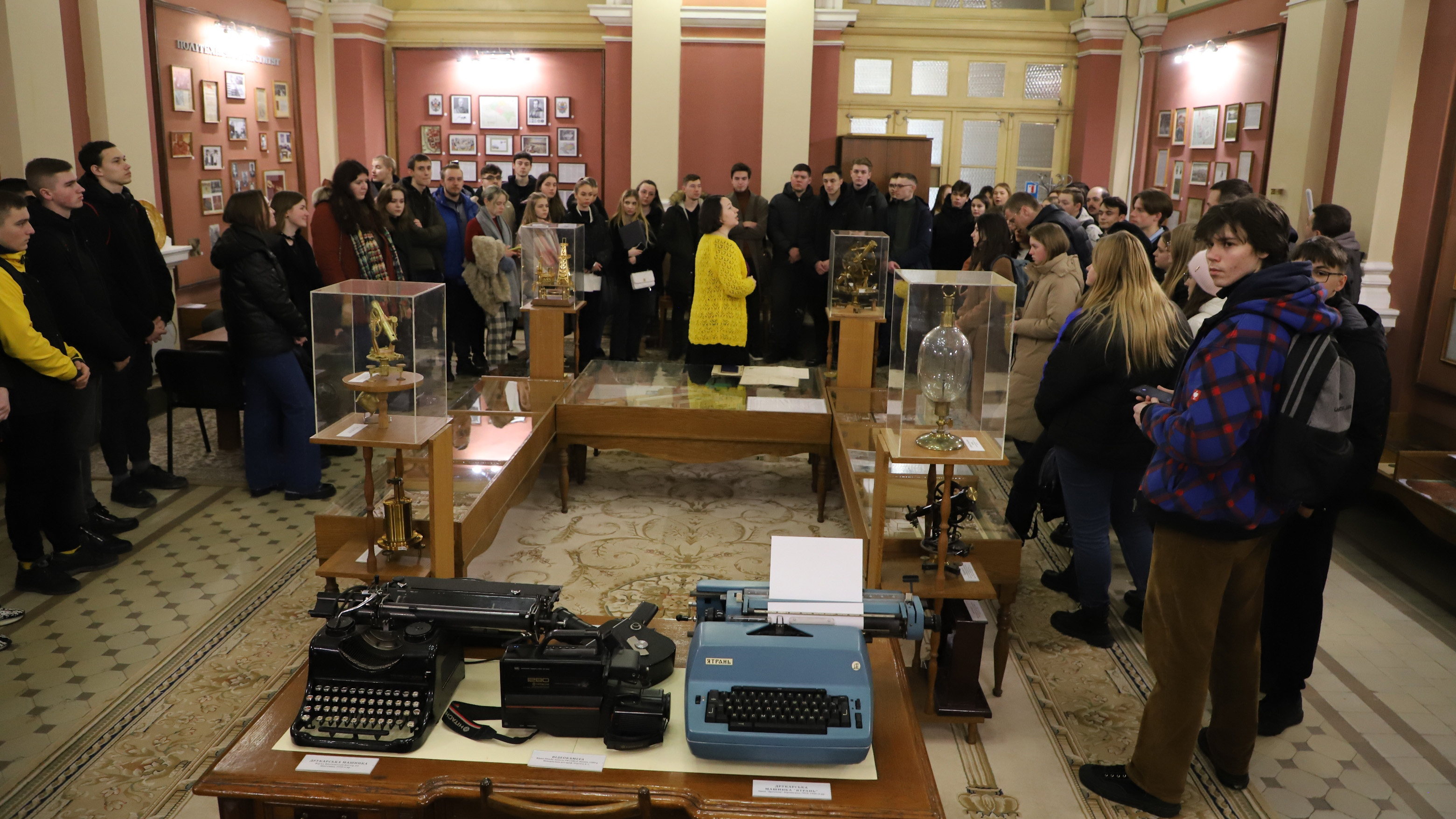This day, Polytechnic students, including me, gathered for a short tour of our University. As part of this event, we visited a number of significant, historical places of Lviv Polytechnic.
First, we went to the Museum of History of Lviv Polytechnic, where we were shown a prototype of a modern calculator, the record book of a student of the Faculty of Architecture in 1890, and Gabriel Sokolnytskyi’s synopsis. This person is the implementer of electrification projects of cities and industrial enterprises in post-war Poland.
During the excursion, an air alarm began, and, considering the danger, we descended into the shelter, which serves as a unique underground passage between several buildings of the University. There, our excursion continued, and we were told about the history of the construction of the University, its development and expansion after the Second World War.
Shortly after the air alarm was off, we were able to see the Assembly Hall in the main building of Polytechnic, which is truly impressive in its beauty. The hall is decorated with paintings based on sketches by Jan Matejko «Triumph of Progress» – a cycle of scenes about the development of human civilization.
It was also interesting to visit the Machine Room in the 10th building of Lviv Polytechnic. There you can see a real jet engine from the MiG-15 aircraft, a fuel rod of a nuclear power plant, a 1500 kW turbine and many other exhibits. I have no idea how they work, but they look pretty cool and futuristic. Looking at all this equipment, I felt a special atmosphere that made me think about the greatness of science and industrial progress.
In general, after a year and a half of distance learning, it was quite interesting to visit these places and delve into the history of Lviv Polytechnic. Such events can inspire students to make new discoveries and study more productively.
